“It’s a completely new life now from the life we had on the 15th of June 2021,” Frank Hancock says.
“It’s before and after. Everything is different,” Jane, his wife, says. “What was the norm has disappeared.”
“Forever,” Frank replies. He has a distinct, but quiet, speaking voice, and the word “forever” is spoken at such a low tone and with such meaning, it sounds like the prophecy it is.
I am at the Hancock’s home near Bagnelstown, in rural Co Carlow. Half an hour earlier, when I had arrived, I was greeted by a satellite of dogs exploding out the door. Five dogs now mill around us in the conservatory, jumping up and down on armchairs and couches. A sixth – Ricky, the largest and most energetic – has been confined to the boot room. It’s an actual boot room, full of riding boots and helmets, and equestrian paraphernalia, with vast multicoloured collages of rosettes on the walls. From the conservatory windows, I can see out over the extensive grounds, where the many Hancock ponies are grazing.
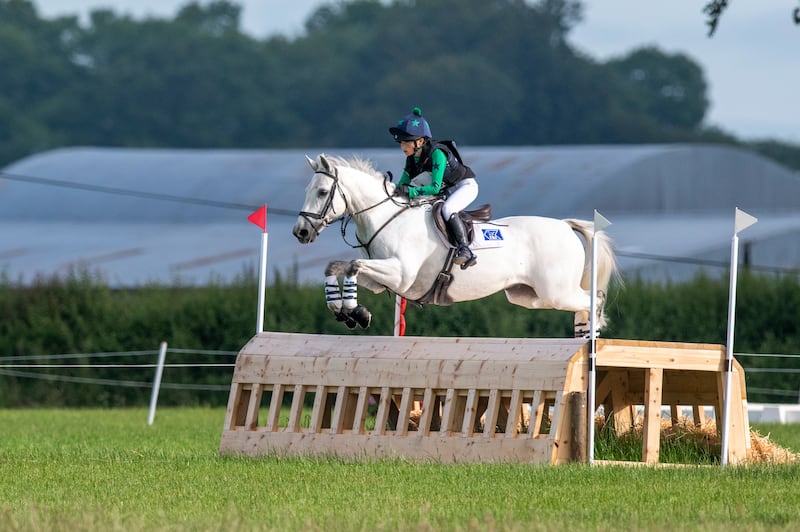
The reason the Hancocks’ lives changed forever in June last year is that their youngest daughter, Tiggy (15), died on June 16th in a riding accident. Tiggy Hancock’s name was not familiar to the general public, but it was extremely well-known within the equestrian world. She had already won a bronze medal for Ireland at the under-16 European Eventing Championships when just 13; the youngest person to do so. It was a remarkable achievement for someone her age, and indicative of a future redolent with promise.
At her removal, the roads leading to her home were lined with fellow riders in tribute. They also formed an equine guard of honour on the day of her funeral. Many jockeys wore yellow ribbons in her memory at Royal Ascot three days after her death. All the Irish equestrian team at the Tokyo Olympics that July also wore yellow ribbons.
Yellow, as her oldest sister Eliza (26) told the funeral congregation, had been Tiggy’s favourite colour. On December 10th last year, Cheltenham Racecourse “went yellow” during a day of fundraising events for the launch of Tiggy’s Trust, established by her family in her memory. The trust will use its funds to help young people in need of mental health support, by partnering with a charity; and for equestrian education and training to young people who otherwise would not have the resources to do so.
Tiggy Hancock’s given name was actually Allegra. How did she come by Tiggy?
Her sister Lucy (22), who makes a FaceTime call to me with Eliza a few days later, explains.
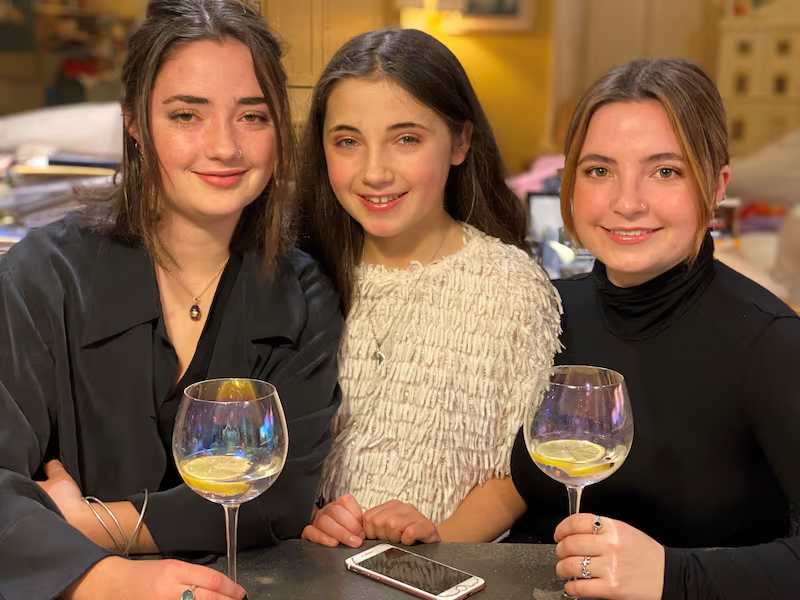
“When was she born, I went into the hospital room. She had these really long fingers with wide fingertips, and everyone kept saying she looked like a tree frog with tree frog hands. And apparently I said, ‘She’s Tig Tog, the tree frog, and the name stuck as Tiggy.”–––
“When she went to playschool, we said, her name is Allegra, but we call her Tiggy,” Jane says. “And within a day she was Tiggy. Everywhere she went, she made sure her name was Tiggy. So she really named herself.”
As the five dogs roam around the sunlit conservatory of the Hancock home, Tiggy’s parents try their best to describe her character to me.
[ Tiggy Hancock (15) remembered as ‘loving’ and ‘fiercely loyal’ at funeralOpens in new window ]
“She definitely had a lot of emotional intelligence” is the first thing Jane says. “She was very in tune with people and that was her great skill; knowing what they were thinking and caring about them.”
“She had a powerful personality,” Frank says. “She was a real leader in her group, not by bossing people around, but by being a source of ideas.”
“It was willpower that made her so good at her riding,” Jane says. “She must have watched every single video endlessly of anybody who had been out doing eventing at the level she wanted to be at. She was very focused, and very competitive. But if her pony tried her hardest, she didn’t mind if she didn’t win.”
“She was fun, happy and kind,” says Eliza. “Very fun and very silly.”
“Kind, funny, and I’d also say stubborn,” says Lucy.
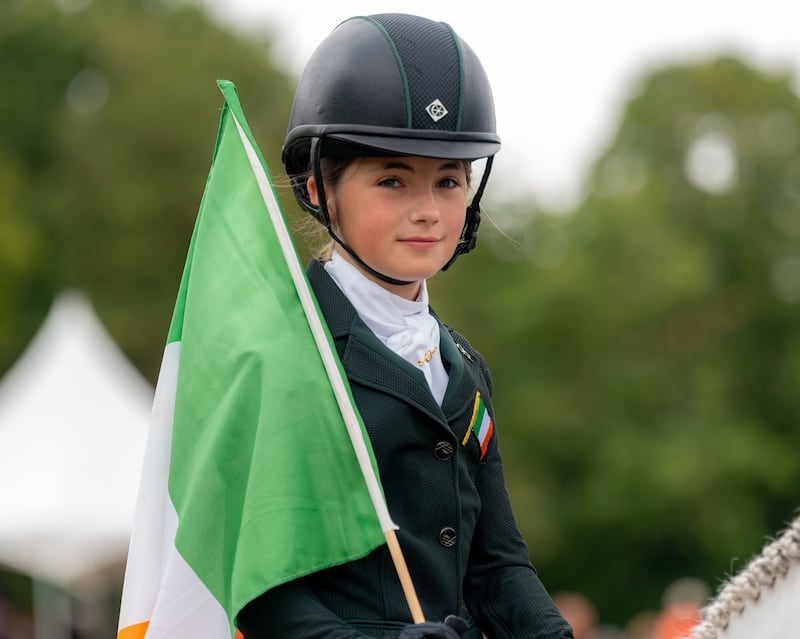
“She was always on TikTok and Instagram,” says Eliza. “By the time she was 12 she had so many followers. She was so good with engaging with people that way; she really understood how to build a community around her. And that is very similar to mum, her and mum always had new people they were meeting. They were always making new friends.”
“I was seven years older,” says Lucy, “and we were really close considering. We spent the whole of lockdown together. I’d say 85 per cent of the time, we had the most fun, and we were really, really, really close, and then she was also quite fiery and I’m quite fiery. So we would get into arguments, but they wouldn’t last longer than half a day, and then we would both hug and make up and be best friends again.”
“I used to find it quite funny to be honest,” says Eliza, who spent her lockdown in England. “I’d wake up during lockdown sometimes to text messages from both Lucy and Tiggy, and they’d be like, I can’t live with Tiggy any more, and then I’d get the same from Tiggy about Lucy, so that always used to make me laugh.”
All three Hancock sisters rode from an early age.
“Tiggy started at about four,” Jane says. “She was surrounded by ponies, because her older sisters rode and she was lucky enough to inherit their ponies. It was part of the way she was brought up.”
One of Tiggy’s closest friends was Sunnibhe Stassin, whom she first met when they were both small children at a horseshow. Tiggy was about six. Sunnibhe, as her mother Zara recalls, was four. Both families were there because their older children were competing. Tiggy and Sunnibhe disappeared and were found some good time later by their anxious mothers – after loudspeaker announcements and general kerfuffle – “on top of a mound of muck and sand, digging to Australia”, as Zara puts it. The two children and the two mothers were friends ever after, as their daughters grew up and became teenagers.
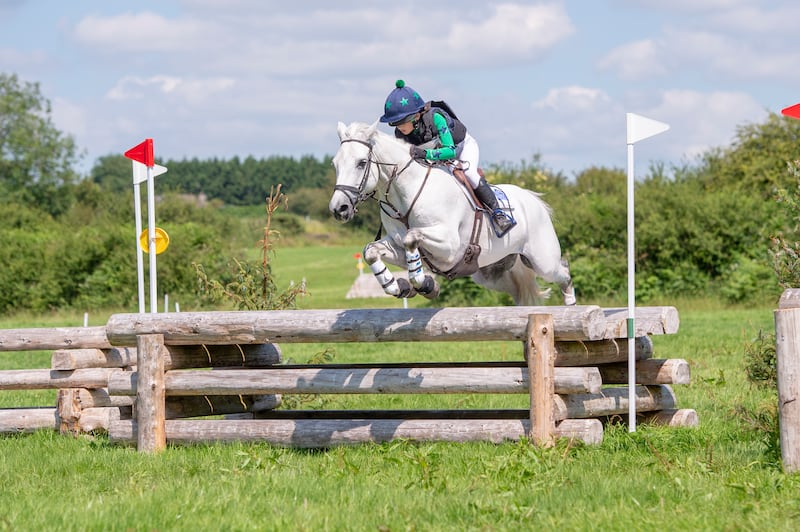
“To me, the essence of Tiggy never changed,” Stassin says. “From the time I met her, she was fun and kind and was very inclusive. Sunnibhe was a good year and a half younger, and that is a big gap at that age. But Tiggy was comfortable with every age group. I would know adults who would say Tiggy was their friend.”
Another long-term family friend is Adrienne Daly, who is now one of the five trustees of Tiggy’s Trust. The pony scene was where the families initially met, at competitions where their children were competing.
“She was a very unusual child in that she was one of these people you always look forward to seeing. You’d arrive at a show, and you’d be so delighted to see her, and have the talk. She had this ability to chat both to adults and her friends and younger children. Tiggy’s appetite for riding was insatiable. She would get on a pony at 9am and get off at 6pm.”
It was not the same pony Tiggy was regularly riding for these many hours. “Over the years, she could have had 20-plus ponies, and 10 of them on the go at any one time,” Daly explains. “Top-class ponies, to ones being broken in. She got the ponies that Lucy and Eliza had brought up through the ranks. She also had lots of ponies they picked up here and there and everywhere. They would sometimes have brought five ponies to a show.”
There are not many children who are advantaged enough to have regular riding lessons, let alone their own pony. To have access to several ponies that belong to your family, and a parent available and willing to drive you all around the country – and to Britain – in a horse lorry to compete is clearly advantage at another level entirely.
“She was a pretty privileged child,” Daly observes at one point, although it’s an unnecessary statement. One of the lots for the auction at Cheltenham for Tiggy’s Trust on December 12th last year, and guiding £5,000, was mostly composed of fine wine from Frank Hancock’s personal cellar. These particular bottles dated from 2006, the year of Tiggy’s birth, and were described as being “stored in bond in the UK”.
“She was very mindful of all the girls who didn’t have what she had. She was always supporting them, and going to watch their competitions,” Daly says.
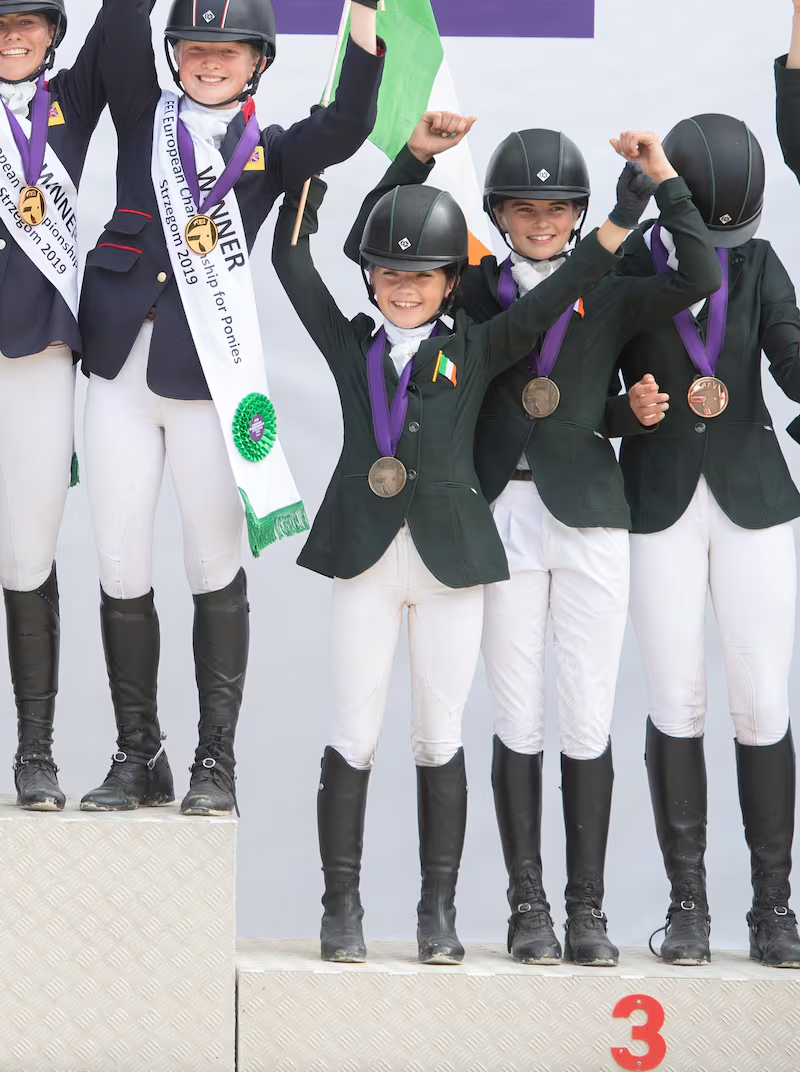
Equestrian and trainer Sam Watson, who has represented Ireland at the Olympics, and at the World Equestrian Games, worked with all three Hancock sisters. I went to talk to him at Ballybolger Stud Farm, not far from the Hancock home.
“I first taught Tiggy at 11,” he says. “Some people come into my training place in fear, or they are nervous. The first thing I noticed was this kid who was so happy to have the opportunity to train. Tiggy was just beaming from ear to ear. She was at a different level to anyone that comes in at that age. It was because she was so experienced; she loved riding ponies; and she also had a great attitude. She wanted to learn. Her appetite for being on a pony and in any type of completion seemed bottomless.”
It’s a fact that to be a skilled equestrian demands much more than technique. Most other sports either involve mastering inanimate objects, such as balls or javelins or racing cars; or perfecting a pure physical skill in the pool or on the running track or on a skating rink. Whereas the rider is nothing without their living, breathing, complicated horse or pony. Watson explains how essential the bond is between them.
[ Tributes paid to talented horse rider (15) who died following training accidentOpens in new window ]
“To ride horses well, you need to be really respectful and empathetic towards them. We are nearly as much of a coach to the horse as we are an athlete ourselves. Riders have things we need to work on, but our job is to get the best out of our horses. That is a really difficult task for young people. In equestrian sports, a lot of successful athletes are in their 40s. For young people in particular, to be able to train a horse requires a level of maturity and understanding and empathy that is usually beyond their years.
“We constantly see people come into our sport who really want to win, and that amount of pressure can be difficult for horses to deal with. From the word go, Tiggy was very competitive. But there was never any blame put on the horses. She’d be reaching down and giving the horse a pat and almost a hug, whether she had won the class or whether there had been made a mistake and it was four faults. In some sports, people would see that as a weakness: that she seemed to be happy even when she had failed. It was not a weakness. That was just her saying [to the horse] it’s okay, I don’t blame you. She didn’t fail that often, because she was very good, but when she did, she took it so well. That is rare. That is a skill.”
Tiggy consistently shared her equestrian knowledge with other young people. She would walk the course with them, or show up to watch their events. “She was always trying to help other people and give them advice,” Watson says. “That was really unusual for one of the youngest people in her division. It takes confidence, but it also takes a type of care and empathy for others. She became famous in her own circle.”
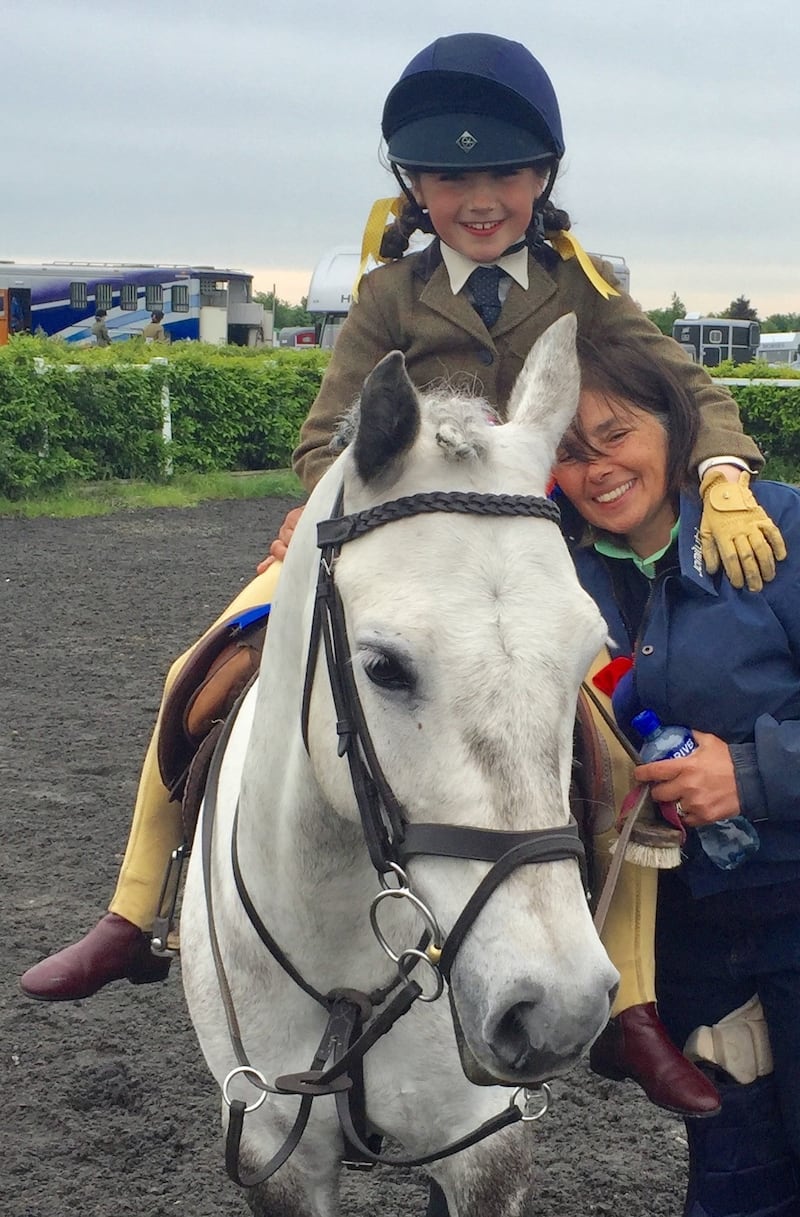
On June 16th last year, a Wednesday, Jane Hancock drove her youngest daughter and some ponies to Greenogue Equestrian Centre in Rathcoole, Co Dublin. Tiggy was a member of Horse Sport Ireland’s High-Performance Eventing programme. She was at Greenogue to train with other members of the programme, who were hoping to be selected to go to the European Championships; a routine day for her and her mother.
Eventing is a challenging three-part equestrian discipline, combining dressage, showjumping, and cross-country. The cross-country element involves jumping fixed fences: showjumping jumps are designed to immediately tumble when there is any impact with the horse.
Jane finds it hard to recount what happened that afternoon, when Tiggy was training over cross-country-type jumps. “She had what they call a rotational fall,” she says eventually.
Sam Watson explains what a rotational fall means. “If a horse makes contact with a fence, there is going to be a loss of balance. Momentum changes. The horse might stumble. It’s like a car making impact with another car. It can cause you to fall off the side of the horse. To use the car analogy, the car flips over. The way Tiggy’s horse hit the fence meant that the horse also fell, and when it fell, it fell in a turning way. So Tiggy ended up not getting thrown out the side, and the horse then came down on top of her.”
Jane was watching.
An ambulance arrived shortly after, but it was in truth a formality. Tiggy was already dead. “She died there, realistically,” Jane says. Then she says stoutly, “It was better for me to be there than not.”
Terrible, life-changing phonecalls were made. Lucy was in a horse lorry at another location. She had last seen her little sister that morning. It was Lucy who called Eliza, in Manchester. Eliza had last seen Tiggy at Christmas, some six months previously.
Due to travel restrictions, and the necessity for Covid tests, it was three long days before Eliza could return home. “I live with my boyfriend, and he has sadly also lost a sibling in the past, so he was able to kind of understand what I was going through,” she says.

Had the sisters ever worried about being injured when they were eventing?
“It is not something that I ever really thought about,” Eliza says.
“I think with any sport, you might worry that someone might break their arm or something. But never anything major,” Lucy says. “Nothing like this.”
The parents of Tiggy’s friends and classmates had to break the news to their sons and daughters that she was dead. They could hardly process it themselves as adults. “Utter, utter, utter disbelief,” as Adrienne Daly says.
Tiggy was in Form 2 at Kilkenny College. The college’s headmaster, Simon Thompson, paid tribute to her at a school assembly later that month. “Tiggy was in no rush to be older, she was grounded in the age she was and enjoyed being who she was. Tiggy was comfortable in her own skin and people gravitated towards her because of this. Everyone close to Tiggy loved her: loved her friendship, loved her sense of fun, loved her energetic spirit.”
“The pain will never go away. Ever,” her father Frank says. “But I think there are things you can do to help alleviate it or work around it. I think Tiggy’s Trust did that for us. It has kept us going. It has been a way of coping. But the pain never goes away. There is not a day when we won’t think about her. But we have discovered we are resilient. All of us, all four of us. We have discovered we are not crawling-into-the-corner types. But it’s an evolution. The 16th of June will be her first anniversary, so it is very early on in the evolution. Who knows what we will feel like in two years’ time.”
“Oh God, it is so hard,” Jane says. “You have to put one foot in front of the other and keep walking. And that is kind of what it is. You just keep walking. The taking-off of Tiggy’s Trust has pulled us forward, kept us going.”
“I think we just get on with it,” Eliza says. “It isn’t the way everyone deals with grief, but I think for us, it’s been the best way. I think it helped that we all had that kind of mindset. For me, if I saw that Mum or Dad or Lucy was really upset all the time, then I would be more upset too.”
“I remember waking up one morning and thinking I am going to make a conscious effort to just keep smiling and keep being as happy as I can, even though you are not necessarily feeling happy,” Lucy says.
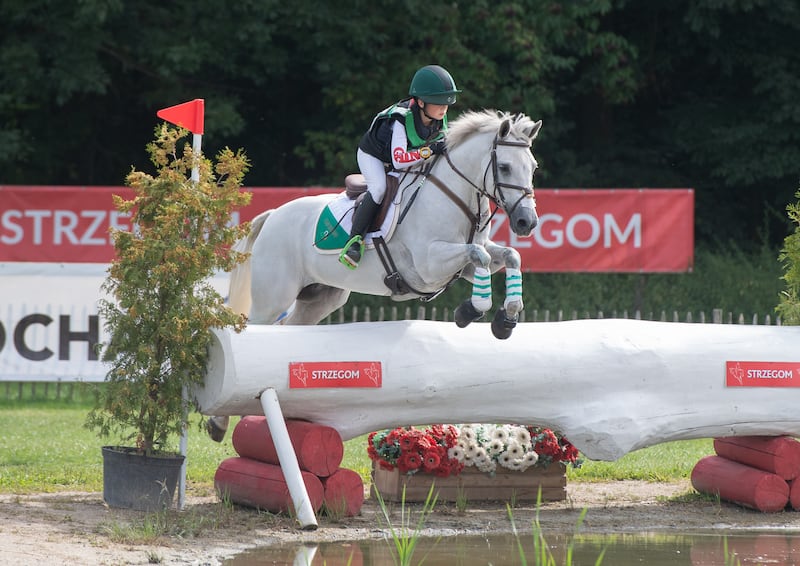
How far does Sam Watson, Tiggy’s trainer, think she could have gone in the equestrian world?
He sits thinking about what he wants to say for a while in his kitchen, as his two small sons run in from the garden with eggs they have collected from their hens.
“I once spent a year in England with a young English rider called Laura Collett,” he says. “We were both based in the same yard in England.”
Later, I looked up Laura Collett. As it happens, she survived a rotational fall from a horse in 2013, which resulted in injuries so severe she was placed into an induced coma for six days. She punctured a lung, fractured her shoulder, broke two ribs, and lost the sight of one eye. But Collett recovered. She was as lucky as Tiggy was unlucky.
“She won the eventing team gold at the Olympics last year and won Badminton Horse Trials this year, which is the biggest competition in our sport,” Watson says. “Laura was someone who won a lot of medals in the underage rounds, as Tiggy had, and had brought that talent on through to the very top. That’s the level I would have put Tiggy’s potential at, for sure. No doubt.”
Collett, now 33, received the accolade of a Member of the Order of the British Empire (MBE) earlier this year.
Watson is close to tears talking to me. “There are people you see who you want to succeed because you know they will be such a good role model for your sport. They won’t be introverted, they won’t be creating controversy. Tiggy was that person. She was that rare combination of having everything you needed to be at the top of her sport, but also to be a great role model for people to look up to, because of how she was doing it, and how she conducted herself so positively and with such warmth. And she had achieved all that as a very young teenager.”
Neither of us say anything.
Watson was one of the people invited to speak at Tiggy’s funeral, which was held at the Church of the Good Shepherd, Lorum, on June 21st. “I said at her funeral that I wanted to inspire Tiggy, and it is cruel that she now inspires me,” he says, one year later. “She has left a legacy. In the end of the day, you don’t remember people because of what they won, but because of the impact they have had on the people around them, and how they made them feel.”




















